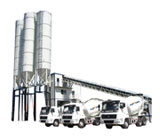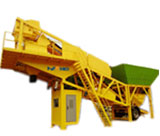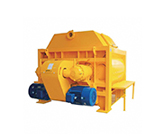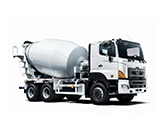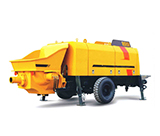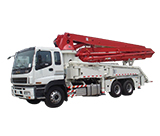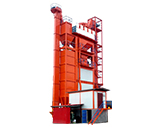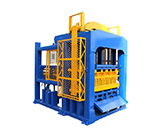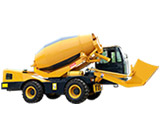HZS50 Hopper Concrete Plant VS HZS60 Belt Concrete Plant
2025.06.11
HZS50 hopper concrete plant and HZS60 belt concrete plant are both small and medium-sized concrete batching plants. Their main differences lie in the material conveying method and production capacity.The comparison between HZS50 hopper concrete batching plant and HZS60 belt concrete batching plant can be carried out from the following core dimensions:
1. Production capacity and efficiency
- HZS50 concrete batching plant:
The theoretical productivity is 50m³/h, but in actual production, it is affected by factors such as the frequency of tank trucks entering and exiting, and the operating proficiency, and the actual output is about 35m³/h. Its working cycle time is 72 seconds/time, which is suitable for the intermittent production needs of small and medium-sized projects.
- HZS60 concrete batching plant:
Theoretical productivity is 60m³/h, the actual output can reach 40-50m³/h, and the working cycle time is shortened to 60 seconds/time. Through pneumatic batching machine and continuous belt conveying, the production continuity is stronger, which is suitable for the high-intensity needs of large projects.


2. Structure and floor space
- HZS50 concrete batching plant:
It adopts hopper lifting and loading, with a compact structure and a total floor space of about 3 mu (including office, material yard, etc.). The hopper track design can reduce space occupancy, but the lifting height is limited, and the maximum aggregate particle size is usually no more than 80 mm.
- HZS60 concrete batching plant:
It relies on belt conveyor for loading, and the floor space is significantly increased. Bucket belt loading requires 6-8 mu, herringbone belt 8-10 mu, and flat belt 10-12 mu. Belt conveying allows larger aggregate particle size (such as 120 mm for pebbles), and has high conveying stability, which is suitable for processing a variety of graded aggregates.
3. Equipment cost and return on investment
- HZS50 concrete batching plant:
The equipment procurement cost is about 60,000 US dollars (including JS1000 concrete mixer, PLD1600 batching machine, cement silo, etc.), plus infrastructure and operating expenses, the total investment is about 100,000 US dollars. Based on an annual output of 48,000 cubic meters, the annual profit can reach 520,000 yuan, and the investment recovery period is relatively short.
- HZS60 concrete batching plant:
The market quotation range is relatively wide, with a basic configuration of about 50,000 dollars and a high-end version of 80,000 dollars. If the annual sales volume is 60,000 cubic meters, the annual profit is about 500,000 dollars, and the investment can be recovered within half a year. Its high output and automated configuration are more suitable for large-scale commercial production.
4. Maintenance and reliability
- HZS50 concrete batching plant:
The hopper lifting mechanism involves vulnerable parts such as winches and wire ropes, with a high failure rate, and regular inspection of wear is required. However, the equipment has a simple structure and low maintenance cost, which is suitable for scenarios with limited maintenance resources.
- HZS60 concrete batching plant:
The focus of belt conveyor maintenance is on belt tension and cleaning. Although the failure rate is low, belt wear and leakage may occur in long-term use. Its dual computer control system and modular design improve reliability, and the maintenance parts are easy to operate.
5. Automation and intelligence
- HZS50 concrete batching plant:
Most of them are semi-automatic control, and some models support centralized operation in the control room, but the degree of automation is limited.
- HZS60 concrete batching plant:
Standard microcomputer automatic control system, supports dynamic panel display, ratio storage and fault diagnosis, and some models adopt dual computer redundant design to ensure production continuity. Its water deduction advance self-learning, dust recovery and other technologies further improve the level of intelligence.
6. Applicable scenarios and mobility
- HZS50 concrete batching plant:
Suitable for projects with limited sites and low production requirements such as rural infrastructure and small commercial concrete stations. Some models are mobile designs, easy to transfer, and suitable for short-term projects.
- HZS60 concrete batching plant:
Commonly used in large-scale infrastructure (such as bridges, high-speed railways), commercial concrete production and other scenes that require continuous feeding. Although its fixed structure has poor mobility, its reliability has been verified in international projects such as Zambia and Pakistan in Africa.
7. Energy consumption and environmental protection
- HZS50 concrete batching plant:
The total installed power is not clear, but the equipment configuration is low and the energy consumption is relatively low. The pulse dust collector and closed conveying system meet the basic environmental protection requirements.
- HZS60 concrete batching plant:
The total power is about 140kW, the energy consumption is high, but the energy consumption per unit output is better. Equipped with a multi-stage dust removal system (such as pulse dust removal on the silo top and dust suction on the mixing main unit), dust emission control is more stringent.
HZS50 hopper concrete batching plant is suitable for small and medium-sized projects with its low cost, small size and flexibility; HZS60 belt concrete batching plant is the first choice for large projects with its high output, automation and stability. Users need to make comprehensive decisions based on site conditions, budget, output requirements and maintenance capabilities. If you are looking for high cost performance and rapid deployment, HZS50 is an ideal choice; if you need long-term efficient production and adaptability to complex working conditions, HZS60 has a more significant return on investment.

